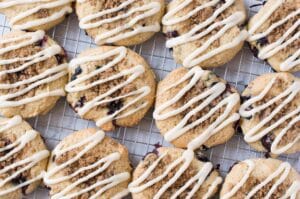Keeping a well-stocked pantry is a valuable tool, along with menu planning, for ensuring that your family has healthy food available even when you’re not able to get to the store.
Everyone’s list of pantry staples will look different (for example, you won’t find olives on mine!), so don’t feel like you should buy certain things just because they appear on pantry lists like this one if you know you won’t use it.
On the other side of that, if you’re just starting your journey to healthy eating (and I’m nowhere near the end of mine!) — eliminating processed foods and high fructose corn syrup, for example — be sure to stock your pantry with the food your family is really eating, making one healthy change at a time rather than trying to force all of the changes at once, which will likely result in you “falling off the wagon.”
- Flours (white, whole wheat, cake, bread)
- Sugars (granulated, brown, confectioners, agave nectar, honey)
- Cornmeal
- Corn starch
- Oils (olive, canola, vegetable)
- Vinegars (white, apple cider, red and white wine, balsamic)
- Pasta
- Rice, barley, quinoa
- Canned vegetables (mushrooms, tomatoes, etc.)
- Beans (dried or canned)
- Broth
- Pasta sauce
- Nut butters
- Nuts
- Bread crumbs
- Pantry vegetables (potatoes, garlic, onion)
- Condiments (ketchup, mustard, salad dressing, worcestershire, tobasco, soy sauce, barbecue sauce)
- Spices (salt, pepper, onion, garlic, parsley, oregano, cinnamon, nutmeg, etc.)
Use your Popular Items list on Plan to Eat for all of your pantry staples so that you can quickly add them to your shopping list when they run low!
What other items are on your list of pantry staples?
Photo by ex.libris




